
Welcome to richmondsnakes.com! I am David, a snake enthusiast living in Richmond, VA. Many people don't know that Richmond is in fact full of snakes! You just need to know where to find them - they can often be shy and elusive. Some Virginia snake species are more common outside of the city limits, in different parts of Henrico County VA, but many types of snakes are indeed common in the more urban parts of Richmond. This guide is meant to help educate you about the beautiful snakes of Richmond, and to help you identify the most common snakes of Richmond, as well as the venomous snakes of Richmond that you should learn to recognize and avoid. If you want more detail, click here for my complete list of ALL snake species in Richmond. Remember the following:
- Most snakes of Richmond are harmless and don't want to encounter you
- Venomous snakes exist but are uncommon in Richmond, Virginia
- Snakes eat rats and mice and are a valuable part of the Virginia ecosystem
- Never kill a snake - if you leave a snake alone, it will leave you alone.
Common Snake Species in Richmond
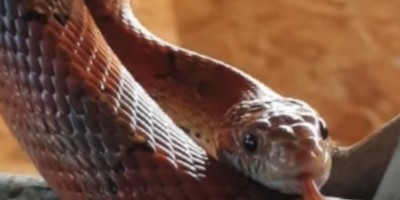 Corn Snake:
The brightly colored corn snake (Pantherophis guttatus) is a very common snake found in the southeastern and central United States. They are found in a variety of habitats, including overgrown fields and gardens, forests, trees, and palmetto flatwoods. They like abandoned and seldom-used buildings. They can be found from sea level to mountain areas as high as 6,000 feet. They are not venomous and have become a popular breed of snake to keep as a pet.
The corn snake gets its name from the maize-like pattern that makes it so distinctive. They have been selectively bred for a wide variety of colors, though yellow and orange combinations still predominate. Corn snakes are voracious rodent eaters and have been very beneficial for human beings because they help control rodent populations, particularly around gardens and farms. They hibernate during the winter in colder climates.
Corn Snake:
The brightly colored corn snake (Pantherophis guttatus) is a very common snake found in the southeastern and central United States. They are found in a variety of habitats, including overgrown fields and gardens, forests, trees, and palmetto flatwoods. They like abandoned and seldom-used buildings. They can be found from sea level to mountain areas as high as 6,000 feet. They are not venomous and have become a popular breed of snake to keep as a pet.
The corn snake gets its name from the maize-like pattern that makes it so distinctive. They have been selectively bred for a wide variety of colors, though yellow and orange combinations still predominate. Corn snakes are voracious rodent eaters and have been very beneficial for human beings because they help control rodent populations, particularly around gardens and farms. They hibernate during the winter in colder climates.
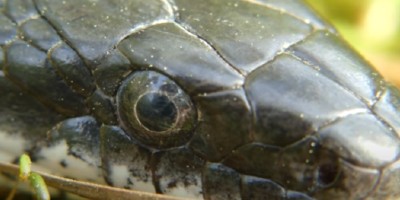 Eastern Rat Snake::
The eastern rat snake (Pantherophis alleghaniesnsis) is endemic to the eastern-southeastern United States. They are typically found in meadows and open wooded areas but are attracted to areas with cover and any place with rodents to hunt. They are not venomous but do emit a foul musk when threatened that smells like and has the taste of poison
The adults average between 3 and a half feet and 7 feet long. The black scales on their back are shiny and they have light-colored bellies, with white scales at the throat and chin. The head is wider than the rest of the body. They brumate in cold months. Brumation is similar to hibernation but the snake occasionally awakens for activities like drinking water.
Eastern Rat Snake::
The eastern rat snake (Pantherophis alleghaniesnsis) is endemic to the eastern-southeastern United States. They are typically found in meadows and open wooded areas but are attracted to areas with cover and any place with rodents to hunt. They are not venomous but do emit a foul musk when threatened that smells like and has the taste of poison
The adults average between 3 and a half feet and 7 feet long. The black scales on their back are shiny and they have light-colored bellies, with white scales at the throat and chin. The head is wider than the rest of the body. They brumate in cold months. Brumation is similar to hibernation but the snake occasionally awakens for activities like drinking water.
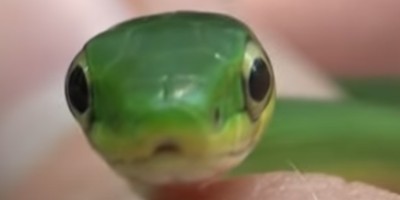 Smooth Green Snake:
The smooth green snake (Opheodrys Vernalis) is a common snake that is found in a large geographic area of southern Canada, and throughout the eastern seaboard of the United States down to Virginia, as well as west to Wyoming, Colorado, Kansas, Mississippi, Texas, and down to northern Mexico. It makes its home in habitats such as marshes, meadows, open woods, and by streams. It has a fondness of open areas. They are not venomous.
The smooth green snake lives up to its name, being thin, with smooth green scales. It is bright green with a yellow or white belly. Juveniles are typically olive-green, blue-grey, or brown until they shed their skin and take on the characteristic bright green. They enjoy eating insects, spiders, ants, moths, snails, slugs, and caterpillars. Their habitat is threatened by human activities such as farming, logging, off-road vehicles, pesticide use, and residential development.
Smooth Green Snake:
The smooth green snake (Opheodrys Vernalis) is a common snake that is found in a large geographic area of southern Canada, and throughout the eastern seaboard of the United States down to Virginia, as well as west to Wyoming, Colorado, Kansas, Mississippi, Texas, and down to northern Mexico. It makes its home in habitats such as marshes, meadows, open woods, and by streams. It has a fondness of open areas. They are not venomous.
The smooth green snake lives up to its name, being thin, with smooth green scales. It is bright green with a yellow or white belly. Juveniles are typically olive-green, blue-grey, or brown until they shed their skin and take on the characteristic bright green. They enjoy eating insects, spiders, ants, moths, snails, slugs, and caterpillars. Their habitat is threatened by human activities such as farming, logging, off-road vehicles, pesticide use, and residential development.
Venomous Snake Species in Richmond
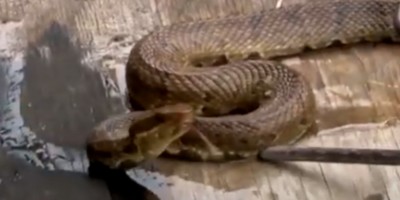 Cottonmouth Snake:
The cottonmouth snake (Agkistrodon piscivorus) can be found throughout the southeast from Virginia to Georgia and Florida, and into Texas. They are also known as water moccasins and they like swamps, floodplains, and wetlands. They can be away from water as well. They particularly like drying pools where they can feed on fish and amphibians. They are venomous.
Cottonmouth snakes have triangular-shaped heads with large jowls that hold their venom. They come in a variety of colors and are usually marked with dark crossbands on a brown or yellow ground color, some are completely brown or black. Their bellies are usually brownish-yellow blotches. They are typically 24 to 48 inches. They are migratory and vulnerable to loss of habitat.
Cottonmouth Snake:
The cottonmouth snake (Agkistrodon piscivorus) can be found throughout the southeast from Virginia to Georgia and Florida, and into Texas. They are also known as water moccasins and they like swamps, floodplains, and wetlands. They can be away from water as well. They particularly like drying pools where they can feed on fish and amphibians. They are venomous.
Cottonmouth snakes have triangular-shaped heads with large jowls that hold their venom. They come in a variety of colors and are usually marked with dark crossbands on a brown or yellow ground color, some are completely brown or black. Their bellies are usually brownish-yellow blotches. They are typically 24 to 48 inches. They are migratory and vulnerable to loss of habitat.
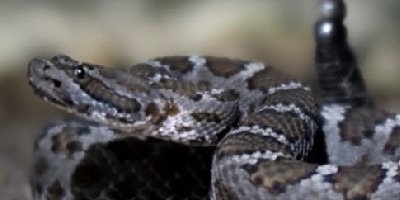 Timber Rattlesnake:
The timber rattlesnake (Crotalus Horridus) is one of the more widespread species of snake in the United States. They are found from New England south to northern Florida. They are found west to eastern Texas and central Oklahoma. They are found in the Midwest to eastern Kansas, southeastern Nebraska, south and eastern Iowa, and southeastern Minnesota. They can be found in swamps, river floodplains, deciduous forests, pine forests, mountains, and farming areas. They are venomous.
The timber rattlesnake usually has a brown or yellowish color with a pattern of black chevrons on the back and sides. They have solid black tails. Adults are usually 36 to 60 inches in length. They eat rodents and small mammals; larger snakes even eat squirrels and rabbits. They brumate in cold months. Brumation is similar to hibernation but the snake occasionally awakens for activities like drinking water.
Timber Rattlesnake:
The timber rattlesnake (Crotalus Horridus) is one of the more widespread species of snake in the United States. They are found from New England south to northern Florida. They are found west to eastern Texas and central Oklahoma. They are found in the Midwest to eastern Kansas, southeastern Nebraska, south and eastern Iowa, and southeastern Minnesota. They can be found in swamps, river floodplains, deciduous forests, pine forests, mountains, and farming areas. They are venomous.
The timber rattlesnake usually has a brown or yellowish color with a pattern of black chevrons on the back and sides. They have solid black tails. Adults are usually 36 to 60 inches in length. They eat rodents and small mammals; larger snakes even eat squirrels and rabbits. They brumate in cold months. Brumation is similar to hibernation but the snake occasionally awakens for activities like drinking water.
If you're unsure, you can email me a photo of the snake at info@richmondsnakes.com and I will email you back with the snake's species. If you found a snake skin, read my Found a Skin? page, and you can email me a photo of the skin, and I'll identify the snake for you. If you need professional Richmond snake removal help, click my Get Help page, or see the below website sponsor I found, who provides that service.
Remember, the term is not poisonous snakes of Richmond, it's venomous snakes of Richmond. Poison is generally something you eat, and venom is injected into you. That said, dangerous snakes are very rare in Richmond. The few venomous snakes of Henrico County are rarely seen. But they are commonly misidentified, so learn about all the snake species of Richmond in order to correctly identify them. These snakes are usually also found in the surrounding towns of Glen Allen , Short Pump, Sandston, Highland Springs, Tuckahoe, Chamberlayne, Dumbarton, East Highland Park, Innsbrook, Laurel, Wyndham, Montrose, and the surrounding areas.
Read our article about:
Do snakes blink?
richmondsnakes.com domain and hosting costs made possible by the generous support of this sponsor:
